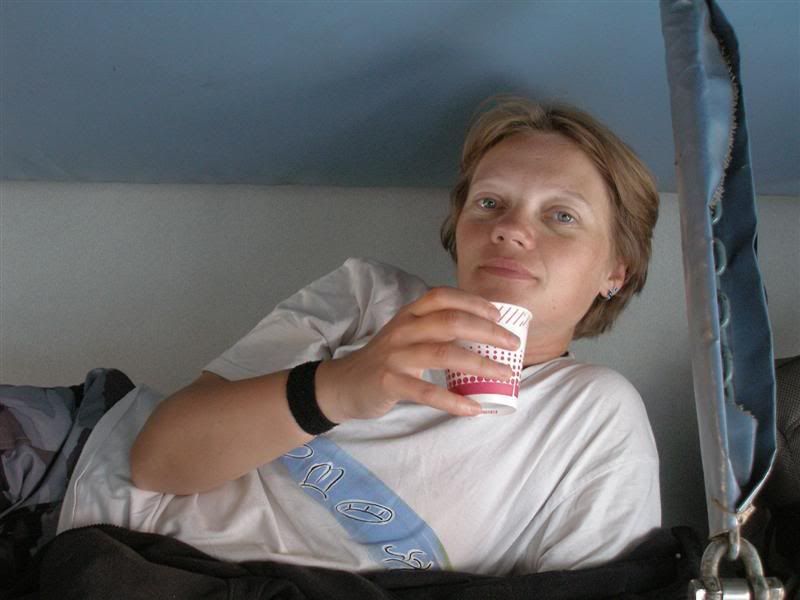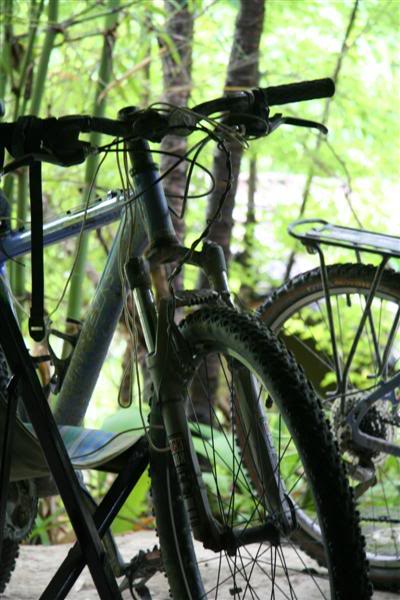Namaste!
Now that we have a decent connection speed we can bring to you some photo updates from the last few weeks events - starting with Varanasi, the holiest city in India :-)
...but first - one of the travellers who was also heading to Varanasi that we met on the platform at Gorakpur station.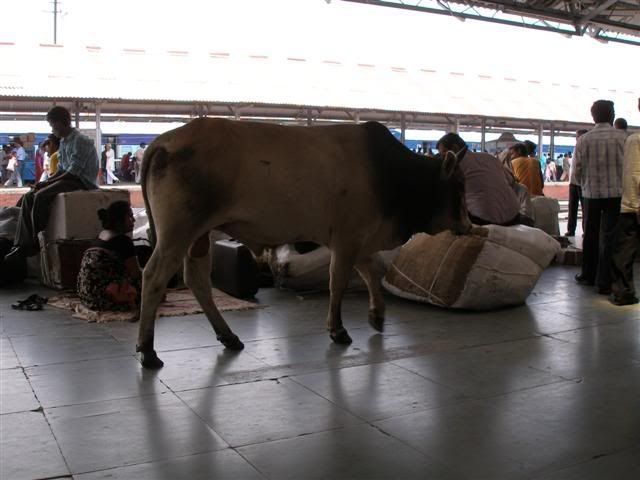
Oh and these two too - Millie and Rich from Australia who we would hang out with for a few days and try to ease their welcome into the CRaZiNeSs Of InDiA %-)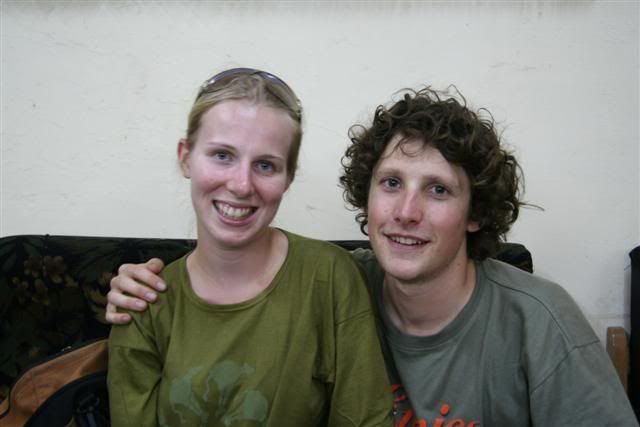
We stayed in the Cantonment area which was certainly much quieter than the hustle and bustle of the old city - although this choice kept us distant from the true atmosphere of the holy city. Varanasi is one of the longest continually inhabited cities in the world and it is mentioned in the ancient Hindu texts of the Rig Vedas. For Hindus to die here it holds much reverence for them as it is believed that they will be freed from the cycle of birth, death and rebirth - that cycle of reincarnation or samsara. Along the river bank of the great Ganga that runs through the city there are over 100 ghats, many of them have legends associated with their existence. To bathe in the great Ganga will rid one of ones sins - hence the hordes to be found in the water. We took a boat trip where the views of the ghats are best held, this required us to be on the boat at dawn in order to catch the early morning rituals...
A beautiful sunrise gave us a gentle and atmospheric introduction to the Ganges :-)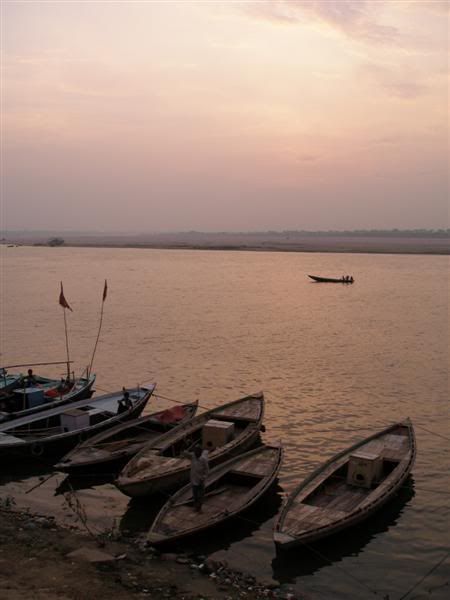

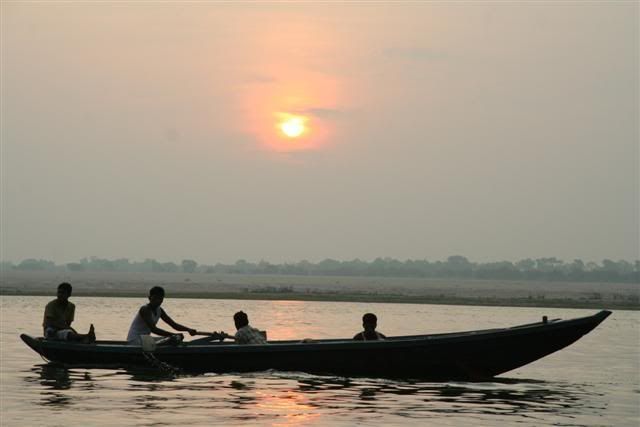
It was appropiate to light a ritual candle (sold to us from another boat) and offer it to the river.
We had not yet reached the main ghats but already there was much to see. In the dim light we could see this tilting temple that was partly submerged.
It was not long before the riverbank began to spring to life.
Our boatman was highly informative (far better than our guide who had decided to sit at one of the ghats and read the newspaper instead of joining us) and it was so calming and peaceful to have him row us along the river and explain the activities that were taking place.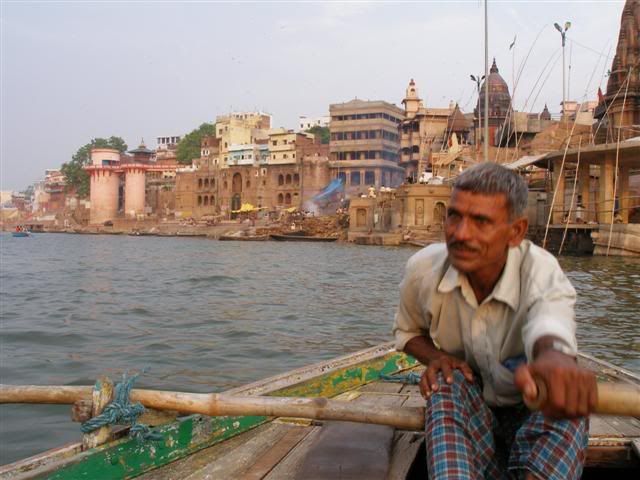
We approached the main ghats where it was apparent that there was an awful lot happening...
...like men standing around in baggy underpants :-) There were already many people bathing and swimming (Mostly men, women have their own seperate bathing ghat)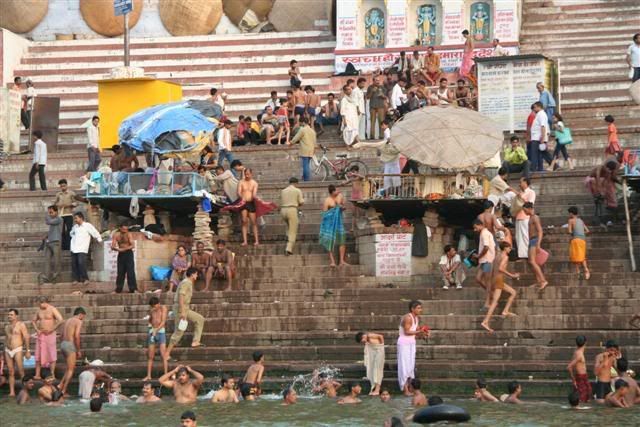
Temples abound, buildings are adorned with bright paint, saris flow in a variety of colours, the eye is overwhlemed.

Whilst some pray...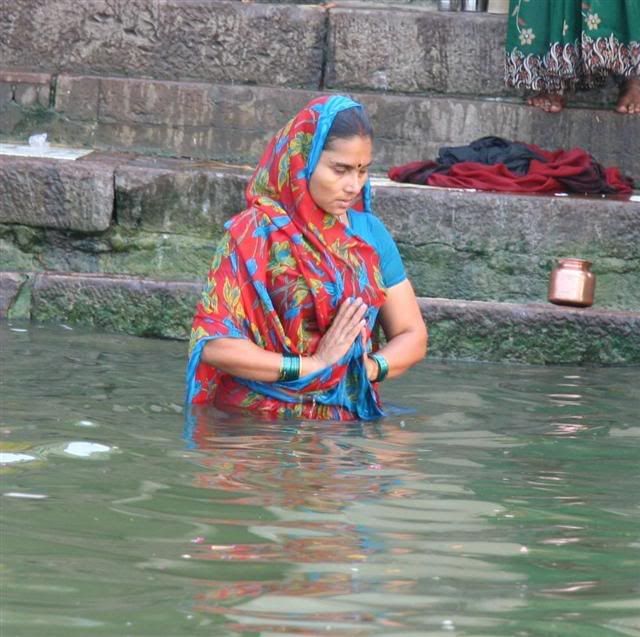
Others wash clothes amongst trash and sewage...
Some meditate...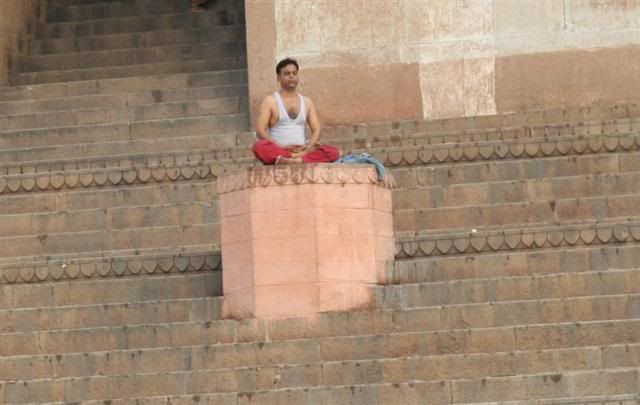
I wondered how many days/weeks/months/years this old man had left to live before he was freed from the cycle of Samsara. There are many homes for the infirm and elderly along the side of the river.
We approached the burning ghats where funeral pyres were already lit. Luckily the wind was not blowing any smoke our way.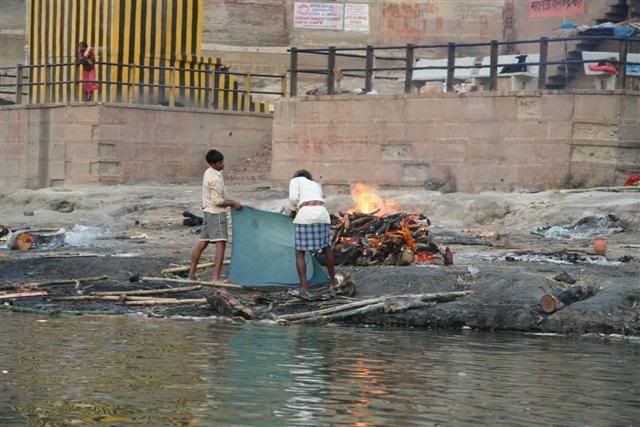
The quantity of wood required is calculated exactly - such is the expense that many cannot afford a funeral here. The ghats are also privatley owned which also adds to the high cost.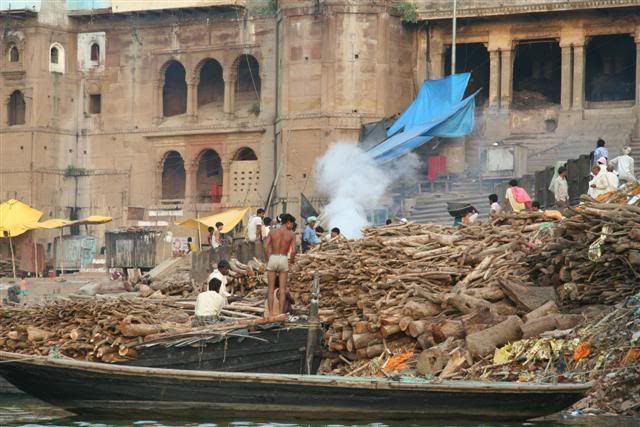
This woman was not fortunate enough to have a funeral pyre - she had died from a cobra bite (known as her body was wrapped in white cloth), the appropiate funeral rite dictated that she is not allowed to be cremated. The cobra sits around lord Shiva's neck and reminds us that we may die at any moment from it's deadly bite, hence we are to live each moment as our last. This corpse too was a reminder...
Dead cows are also honoured by being disposed of in the river.
And people wash clothes.
The religious fervour was incredible.


When we had finished the river trip we took a ride in a jeep out to Sarnath where Buddha taught his first sermon. We also visited a Japanese Buddhist temple there where a monk was chanting mantras to the beat of a drum. 
As always there was an opportunity to visit a weavers "co-operative" in the muslim area to buy some products - Varanasi also being known for it's highly prized silk. It was amazing to see the weavers at work, they were very nimble, the skill is passed down from father to son (often at a very young age). I was not impressed though by the young age of one of them and the dim light in which they all worked. It was obvious that the profit was not being made by them, their scrawny builds a contrast to the fat salesmen in the beautiful shop. I had my doubts as to the treatment of the workers and it being a co-operative. The term fits well when you want to talk fair trade to tourists. Others were not so sceptical and made purchases. Maybe I read too much into it but I really did not like what I saw (my personal opinion of course!)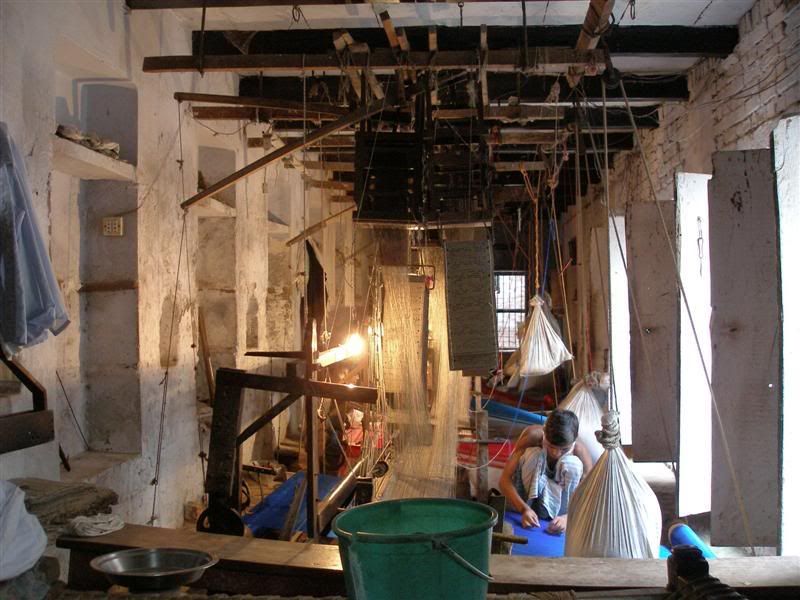
Some of the saris can take up to six months to make.
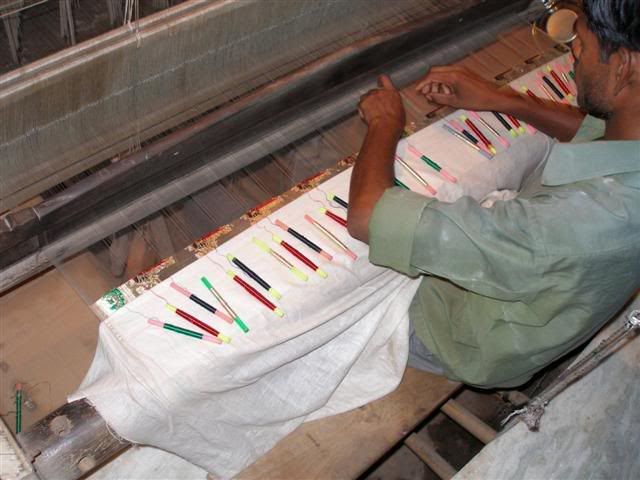
Detail of the work mid creation.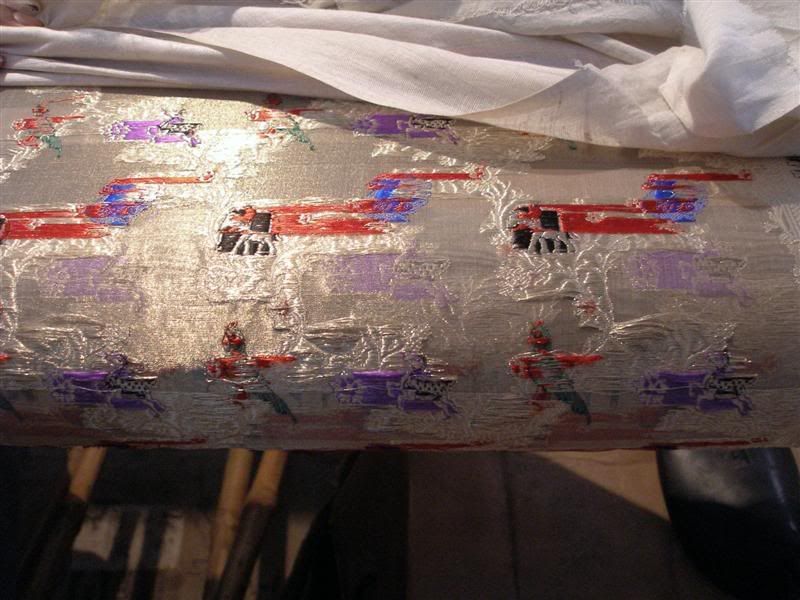
Finally, here I am on the train to Delhi. We had hard sleepers, no aircon and not much room. It was 15 hours of... a reasonably nice experience despite how it sounds.
Tired the next morning but enjoying chai on my bunk. Masala chai is overtaking coffee on my list for the number one breakfast drink :-)